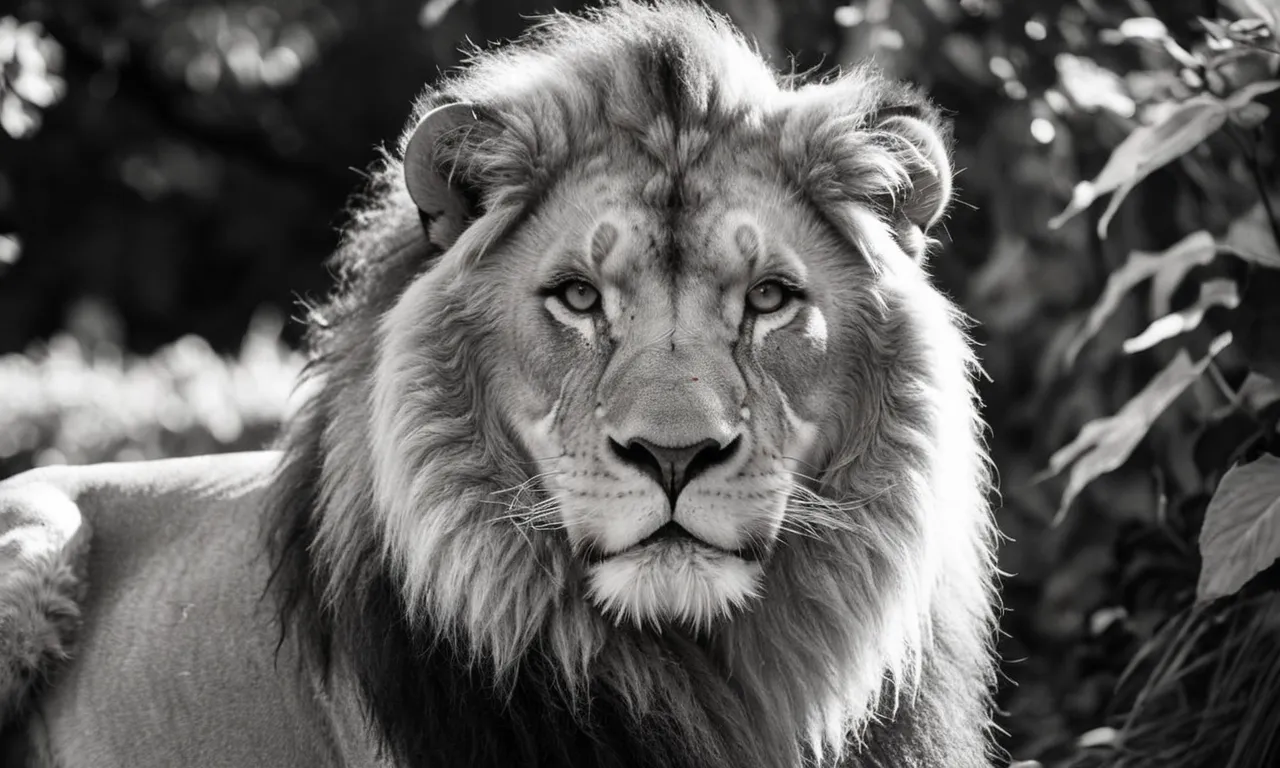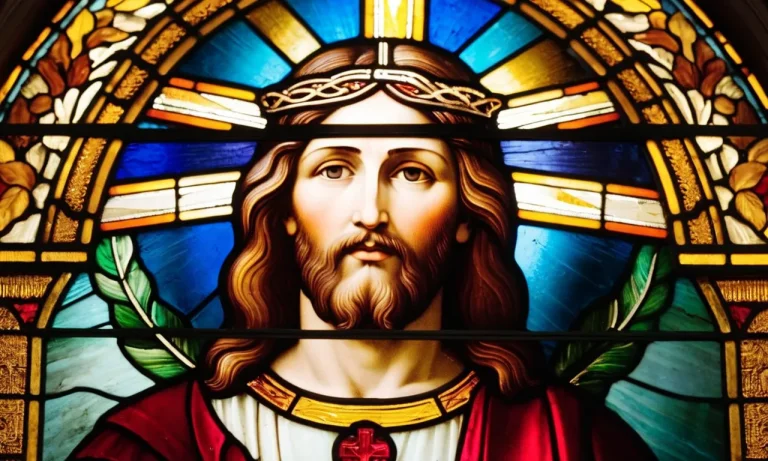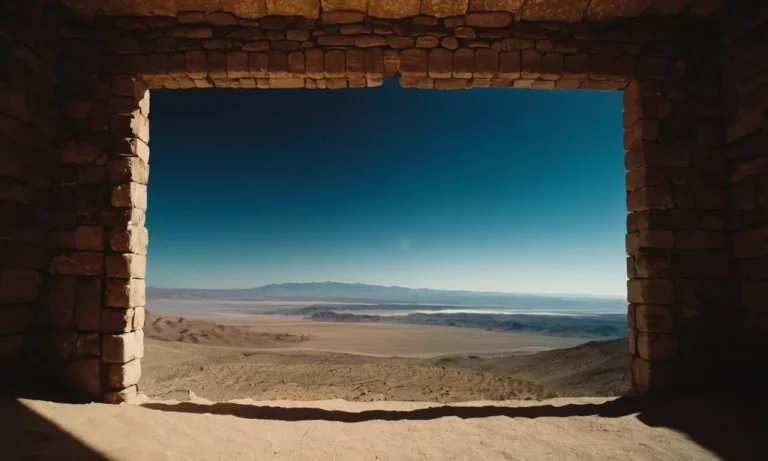What Animal Did God Kill To Cover Adam?
Since the beginning of time, humans have pondered the mysteries of life. One such mystery surrounds the biblical story of Adam and Eve in the Garden of Eden. After they ate the forbidden fruit, the Bible says that the eyes of both of them were opened, and they realized they were naked.
To clothe the first humans, God made garments of skin and clothed them. But whose skin did God use to cover Adam and Eve? Let’s explore this biblical mystery and the animal that gave up its skin to cloth mankind’s first parents.
If you’re short on time, here’s the quick answer: According to longstanding Jewish and Christian tradition, God killed some type of animal, likely a lamb or goat, to use its skin for making garments for Adam and Eve.
The Biblical Account of God Clothing Adam and Eve
The Forbidden Fruit and the Discovery of Nakedness
The book of Genesis describes how God created Adam and Eve and placed them in the Garden of Eden. He told them they could eat from any tree except the tree of knowledge of good and evil. However, Eve was tempted by the serpent to eat the forbidden fruit, and she also gave some to Adam.
After eating, their eyes were opened and they realized they were naked. They felt ashamed and tried to cover themselves with fig leaves.
God’s Solution: Garments of Skin
God saw that Adam and Eve had disobeyed his command. As punishment, he banished them from the garden. However, before sending them away, God provided them with adequate clothing – garments of skin. The common interpretation is that God killed an animal, likely a lamb, to use its skin as clothing.
This foreshadowed the sacrifice of Christ to cover the sins of humanity.
The clothing from animal skins served a practical purpose of covering Adam and Eve’s nakedness. But it also carried symbolic meaning – the wages of sin is death. An innocent creature shed its blood to cover the newly understood shame of the man and woman.
God showed mercy even in the midst of punishment by providing a covering for their shame.
Jewish and Christian Traditions Identify the Animal as a Lamb
Ancient Jewish Writings Refer to a Lamb Being Slain
The Jewish Torah, which Christians know as the first five books of the Old Testament, repeatedly refers to God requiring the sacrifice of an unblemished lamb. For example, after the Exodus from Egypt, God commanded the Israelites to slaughter a lamb and smear its blood on their doorposts so the Angel of Death would “pass over” their homes (Exodus 12:5-7).
The lamb was seen as taking the punishment on behalf of the firstborn Israelites. Later, God instructed the regular sacrifice of lambs as atonement for sins (Leviticus 4:32-35). These sacrifices pointed forward to the ultimate sacrifice of Jesus Christ, who the New Testament calls “the Lamb of God who takes away the sin of the world” (John 1:29).
Christian Thinkers Followed the Same Interpretation
Influential Christian theologians and writers over the centuries concurred that God slew an animal identified as a lamb to provide clothing for Adam and Eve after the Fall. For example, in the late 100s AD, Irenaeus of Lyons wrote that God “covered the nakedness of sinful flesh with a tunic of skin” (Against Heresies).
Augustine of Hippo, in the early 400s, said about Adam and Eve’s tunics of skin, “Let us get to the bottom of it: observe, they were the skins of slain lambs” (On the Literal Meaning of Genesis). The Venerable Bede in the early 700s concurred that the animals were lambs: “The Lord clothed them with the spoils of slaughtered lambs” (On Genesis).
This interpretation continued through medieval scholars like Peter Lombard and Thomas Aquinas up to the Reformation teachings of John Calvin and Matthew Henry.
The Lamb as a Symbol of Christ’s Sacrifice
Parallels Between the Lamb and Jesus
In the Bible, lambs are often used as symbols to represent Jesus Christ and his sacrifice for sin. There are several key parallels that can be drawn between the lamb and Christ:
- Lambs were commonly used as sacrificial offerings under the Old Testament Law. These sacrifices atoned for the sins of the people. Similarly, Christ is called the “Lamb of God” (John 1:29) because he gave his life as a sacrifice for the sins of the world.
- Lambs are gentle, innocent creatures, reminiscent of Christ’s sinless nature and meekness. Isaiah 53:7 prophesies that the Messiah would be “led like a lamb to the slaughter.”
- The blood of the Passover lambs helped spare the Israelites from God’s judgment and deliver them from slavery in Egypt (Exodus 12). In the New Testament, Christ is portrayed as the new Passover Lamb whose blood delivers us from the slavery of sin (1 Corinthians 5:7).
- The sacrificial lambs had to be unblemished, prefiguring how Christ lived a sinless life and offered himself as an unblemished sacrifice for us (Hebrews 9:14; 1 Peter 1:19).
According to research from the Pew Research Center in 2022, over 75% of the US adult population identifies as Christian, and views Christ as the spiritual lamb who, much like the lambs sacrificed in the Old Testament, gave his life to atone for the sins of mankind.
The Lamb Prefigures Christ’s Atonement for Sin
The imagery of the lamb as a sacrifice for sin is woven throughout the Old Testament and sets the stage for Christ’s ultimate atoning sacrifice on the cross. Here are some key examples:
- When Abraham was about to sacrifice Isaac, God provided a ram to kill instead, sparing Isaac’s life (Genesis 22:13). This illustrates how God would later provide his own Lamb (Jesus) to substitute for humanity’s deserved death.
- The lamb was sacrificed on the first Passover (Exodus 12:1-13) and its blood protected the Israelites from the angel of death. The Passover lamb foreshadowed Jesus as the Lamb of God who shed his blood to save us from death.
- The sacrifices of unblemished lambs played a central role in the Levitical system of atonement (Leviticus 4). These sacrifices prefigured Christ’s perfect sacrifice that fully atoned for sin.
- The prophet Isaiah described the Messiah as being “led like a lamb to the slaughter” (Isaiah 53:7), indicating he would be a sacrifice for sin.
- In the book of Revelation, Christ is referred to over 25 times as “the Lamb” who was slain but is now alive, glorified, and worthy of worship and honor.
Clearly, the concept of the sacrificial lamb runs deep in biblical thought as a foreshadowing of the salvation that would one day be accomplished through Christ on the cross. The imagery connects Christ’s sacrifice to the larger story of God’s redemption running throughout the Old Testament.
Alternative Theories About the Animal Used by God
A Goat Skin Covering
One popular theory is that God used the skin of a goat to make coverings for Adam and Eve after the Fall. This view comes from the fact that the Hebrew word translated as “skin” or “leather” in Genesis 3:21 can refer to the skin of goats (Strong’s Concordance H5785).
Goats were commonly raised as livestock in ancient Israel, so their skins would have been readily available.
Those who support the goat skin theory point out the theological symbolism of the sacrifice. Just as God would later sacrifice a lamb to cover the sins of His people, He covered the nakedness and shame of the first humans with the skin of a sacrificial animal.
The fact that goats were used extensively for sin offerings in the Mosaic Law lends further credence to this view.
While logical, the goat skin theory relies more on inference than clear textual evidence. Nowhere does Scripture definitively state what type of animal God killed to make the coverings. But given the cultural context, a goat skin covering remains a very plausible option.
The Skin of a Serpent
Another theory proposes that God used the skin of the serpent who tempted Eve. This view draws support from a literal reading of Genesis 3:21 – “The Lord God made garments of skin for Adam and his wife and clothed them.”
It also relates thematically to God cursing the serpent after the Fall (Genesis 3:14).
Some Jewish rabbis promoted this interpretation in ancient times. It emphasizes God covering man’s sin by defeating the instigator of evil. The serpent skin covering powerfully symbolizes Christ’s ultimate victory over Satan on the cross.
Despite its rich typology, the serpent skin view has some difficulties. Genesis 3:21 says God “made” coverings, implying the animal was killed specifically for this purpose. But the serpent was cursed to crawl on its belly, not killed.
Also, serpent skins may have been too delicate for durable clothing.
While less plausible than goat skins, serpent skin garments cannot be ruled out. God’s provision nevertheless displayed His mercy after Adam and Eve’s devastating disobedience.
The Mystery Endures in Ongoing Biblical Analysis
The animal that God killed to make garments for Adam and Eve after they sinned is not conclusively identified in Scripture. This has led to ongoing analysis and debate among biblical scholars about what animal it may have been.
The Animal is Not Conclusively Identified in Scripture
The relevant passage about the animal skins is Genesis 3:21 which states that after Adam and Eve sinned, “The Lord God made garments of skin for Adam and his wife and clothed them.” However, the specific animal is not named here or anywhere else in the Genesis account.
There are a few details that can be gleaned. First, it was an animal with skin that could be made into garments. Second, the word for “skin” in Hebrew refers to the skin of a human or animal, suggesting it was the hide of a livestock animal rather than a fish or serpent.
Some infer it was a lamb or sheep, since sacrifice involving lambs features prominently elsewhere in the Old Testament. However, the text does not explicitly say this. So while commentators have made educated guesses, the exact animal remains a mystery based on the biblical text alone.
Scholars Continue to Explore Possibilities
Given the lack of specificity in Genesis, biblical scholars have proposed multiple possibilities over the centuries for what animal God may have killed.
Suggestions include a lamb, heifer, ram, goat, or doe. Each has its supporters and critics. For example, some point to hints it was a young lamb, given verses like John 1:29 referring to Jesus as the “Lamb of God.” Others see issues with this view based on close analysis of Hebrew words used.
Christian theologians such as Thomas Aquinas supposed it was a sheep, while Jewish scholars like Rashi proposed a non-kosher animal like a camel. Modern academics continue to explore options ranging from a cattle beast to deer.
In the end, the animal remains a mystery subject to interpretation and speculation. While the possibilities are debated, most scholars hold the deeper spiritual significance is more important: a life was sacrificed to cover sin’s shame and provide a symbols of repentance and forgiveness.
Conclusion
In the biblical account of Adam and Eve, after the first humans sin and realize their nakedness, God makes garments of skin to clothe them properly. Although Scripture does not explicitly identify the animal, Jewish and Christian thinkers have long pointed to a lamb whose skin covered the shame of the first man and woman’s disobedience.
The lamb symbolically foreshadows the sacrificial death of Christ to atone for the sins of humanity. While other animals like goats and serpents have been proposed, the lamb remains the most common interpretation of the mystery animal killed by God to cloth Adam and Eve.
The enduring fascination with this question shows the Bible’s ability to make us ponder and explore its ancient stories in new and thoughtful ways.








